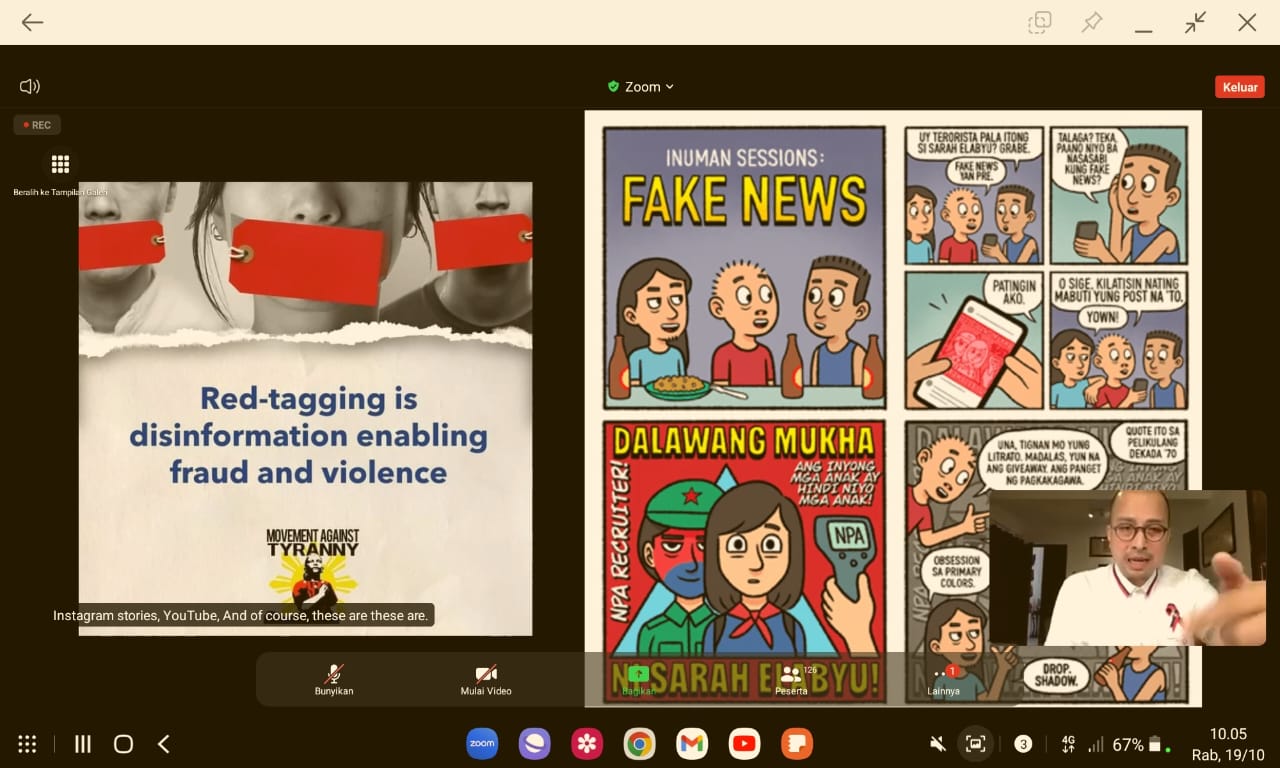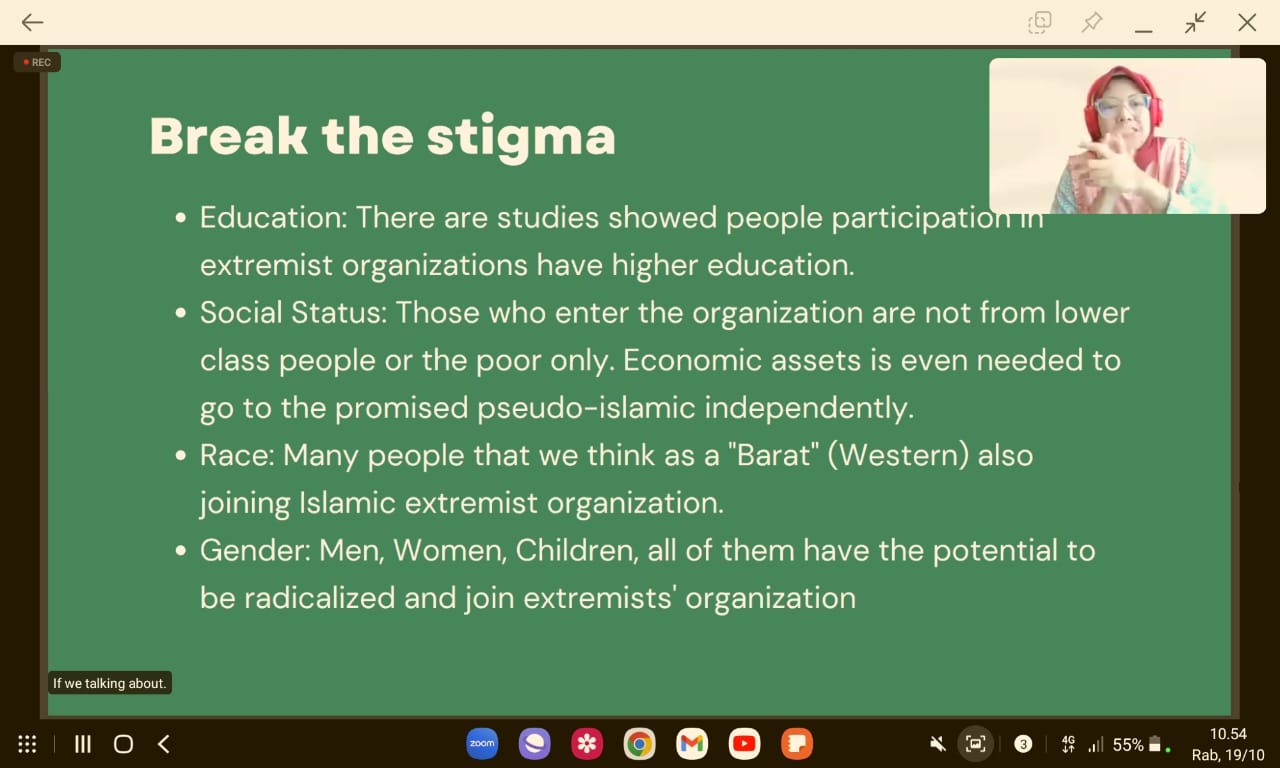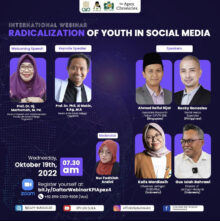Radicalization of Youth in Social Media

Social media is used by terrorist networks to disseminate their ideology, radicalize youth and recruit for their networks. A survey from the National Counterterrorism Agency (BNPT) conducted in 2021 found that at least 85% of young people that regularly use social media are prone to exposure to radical ideologies. This is one reason why some young people, exposed to radicalism, commit acts of terrorism on their own without being directly linked to any specific network. These individuals are called lone wolves.
Some examples of this lone wolf theory include the suicide bombing at the Ritz Carlton Hotel in 2009, committed by two men, 18 and 28 years old. Another concerning example was the case of the attack on the Police Post in Cikokol, Tangerang, Banten in 2016. This act of lone wolf terrorism was carried out by a 22 year-old man. He brutally attacked police officers with machetes and objects resembling explosives. In 2019, a 24 year-old young man carried out a suicide bombing at the Medan Police Headquarters, North Sumatra.
In the courtyard of Brimob’s headquarters, Depok, West Java, there was a stabbing incident that involved police officers. This incident was perpetrated by a 23 year-old young man in May of 2018. In 2021, a 26 year-old married couple carried out a suicide bomb attack on the Makasar Cathedral Church in March 2021. On that same month, a 25 year-old woman carried out a blind attack with a firearm at the Police Headquarters.
Social media users in Indonesia reached 191 million people mostly dominated by young millennials and generation Z. According to data from the Ministry of Communication and Informatics (Kominfo), from March 2017 to April 2021 there were 20,453 reports of radically charged content which were subsequently investigated.
People’s dependence on the internet, in this case social media, is very high. It is even used to seek religious knowledge. According to the Dean of the Faculty of Da’wah and Communication UIN Sunan Kalijaga Yogyakarta, Prof. Dr. Marhumah, social media can act as a religious marketplace.
“Religious people can freely choose, consume, share and internalize religious contents that are appealing and relevant to their preferences,” she said.

Online Radicalization in Singapore
Ahmad Saiful Rijal Bin Hassan, Associate Research Fellow of ICPVTR, Rajaratnam School for International Study (RSIS) in his presentation at the International Webinar of The Apex Chronicles with KPI UIN Sunan Kalijaga, Yogyakarta said that currently radicalization is indeed becoming a global phenomenon that is not always violent but plays an important role as a motivator that can incite violent acts from radical groups.
Radicalization on social media itself has several stages. It startswith interpretation, which is supported by a stimulus and opportunity. Acceptance then serves as the course that sways the viewer to their new identity. The next step is conviction, where they begin having strong beliefs that start defining their views of what is right and wrong.
In this third stage, viewers who have been brainwashed by the content and this makes the process of deradicalization very difficult. These incredibly strong beliefs and or ideologies, evenif acts of violence have not been committed, make leaving terrorist groups very difficult. The last stage is action, where after stimulus, acceptance, and conviction, carrying out and planning acts of terrorism or execution occurs.
In Singapore, social media has an important role for young people. Around 40% of all young Singaporeans spend more than 10 hours per week on the internet; 90% of which surf social media sites. Between 2002-2014, there were 3 cases of radicalism involving young people and between 2015-2021 there were 8 young people under the age of 20 who were arrested for radicalism.
“In Singapore, not only Muslims are radicalized, but also non-Muslims who are being radicalized by far-right ideology,” Saiful explained.
According to his presentation, in Singapore there was one case involving a 16 year-old boy, the youngest ever detained. He idolized Brenton Tarrant, the Christ-Church shooter and killer. He felt that ISIS represents true Islam and he also believed that Muslims in Singapore support ISIS. He saw the need to protect Christianity from being tarnished by Islam and Muslims. He first bought firearms and joined a rifle club. He also tried to rent a car even though he was not eligible to drive. Ultimately he used his parent’s vehicle to go to Mosques and attack Muslims worshippers.

Radicalization in the Philippines
Radicalization in the Philippines has targeted students, families, and indigenous people especially in rural areas. Social media is the means by which they spread various narratives that can influence the minds of their radicalization targets. Alexander Clarence Cervantes Gonzales, better known as Rocky Gonzales, a social media specialist from the Philippines, explained his observations regarding this popular narrative that is widely spread on social media.
Looking at terrorism groups in the Philippines looks more synonymous with politics. Namely communist groups from a party known as the New People’s Army (NPA), have their narrative also related to politics and the Government. They continually make Government seem apathetic and they brand the Government as an enemy of society that must be resisted.
“Demonizing the family, the community, the government as incompetent or weak, oppressive, and dictatorial,” said Rocky.
Meanwhile, rebels and terrorists are portrayed as heroes. Traditional values are portrayed as bad and the group’svalues and ideologies are portrayed as good new values. There is also a narrative that individual rights always outweigh the common good or vice versa depending on the issue, dictatorship, and ideas concerning foreign fighters.
As of January 2022, the total population of the Philippines was approximately 111.8 million people. Of these, 9.6% or about 10.7 million people are aged 13-17, about 12.8% or 14.3 million people are aged between 18-24 years, and 16.4% or 18.3 million are between 25-34 years-old. Social media users are around 92.05 million people or 82.4% of the total population of the Philippines.
The Philippine government does not stand idly by without noticing this phenomenon. They are cooperating with Say No to Red Tagging campaign. Red tagging is defined by Philippine jurisprudence as “the act of labelling, branding, naming and accusing individuals and/or organization of being left-leaning, subversives, communists or terrorists (used as) strategy … by State agents, particularly law enforcement agencies and the military, against those perceived to be threats or enemies of the state.”

Women, Youth, and Conservatives Turn in Indonesia
Kalis Mardiasih, an influencer from Gusdurian Network Indonesia, mentioned and recalled a movie titled “Jihad Selfie” by Noor Huda Ismail, a terrorism observer from Yayasan Prasasti Damai.
“Extremisms target is not like the old stigma, like the poor and uneducated one. Noor Huda Ismail research showed children from rich families and achievers in Al Azhar University become ISIS soldiers and are interested in going to Afghanistan because of networking through Facebook. They are interested in the perceived masculinity from becoming ISIS soldiers such as strapping, holding guns, and training in an open field,” she said.
In addition, the narrative of intolerance circulating on social media also shows changes in social and cultural characteristics such as not using Islamic vocabulary but using a more general and casual Indonesian vocabulary. Contemporary radicalism designs are typical of young people but the message conveyed is bold combined with logical misdirection. For example, You’re Muslim, so your ideology must be Islam.
In addition to highlighting narratives spread on social media to radicalize young people, Kalis also highlighted narratives targeting women, including the existence of news channels intended especially for Muslim women. Such cases include the Muslimah news daily post and Muslimah news id.
In the past, women were associated with maternal traits like nurturing, caring, and weakness. The prevailing thought was that there was no way women could commit acts of terrorism. Now, women’s involvement can’t be underestimated. They have now become executors in acts of terrorism. For example, the Surabaya bombing, the Sibolga bombing, the church bombing in Makasar and the attack on a Police Headquarters.
“Woman still can’t be an organization’s leader, but women are an important element for propaganda,” as she mentioned in her presentation.
According to data from 2022 the number of women joining terrorists organization groups has risen more than 50% in the last 5 years. The number of women involved in acts of terror is increasing very quickly, likely due to organizations such as Boko Haram, Al Shabaab, Taliban, and ISIS who actively recruit and involve women.



